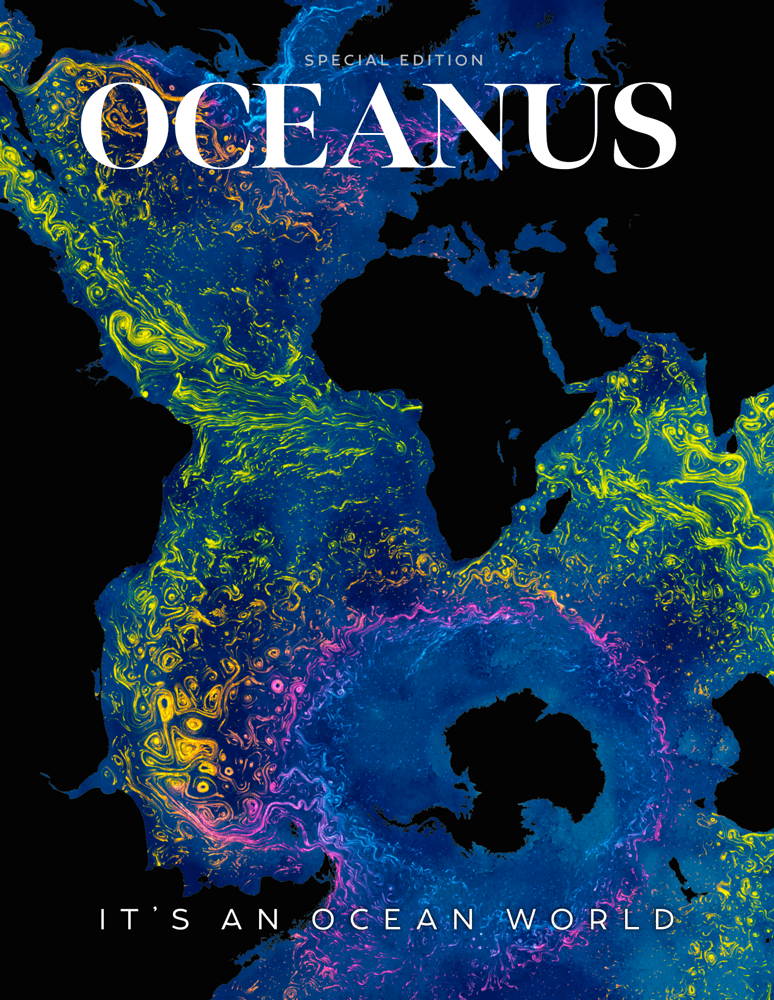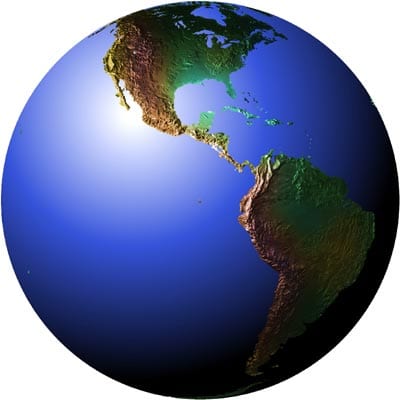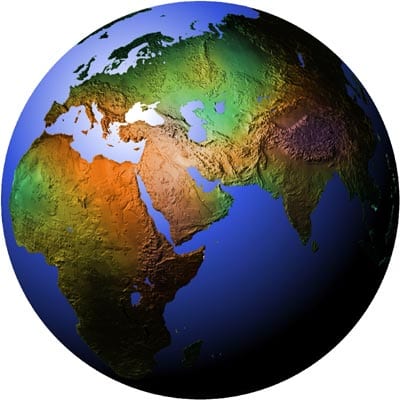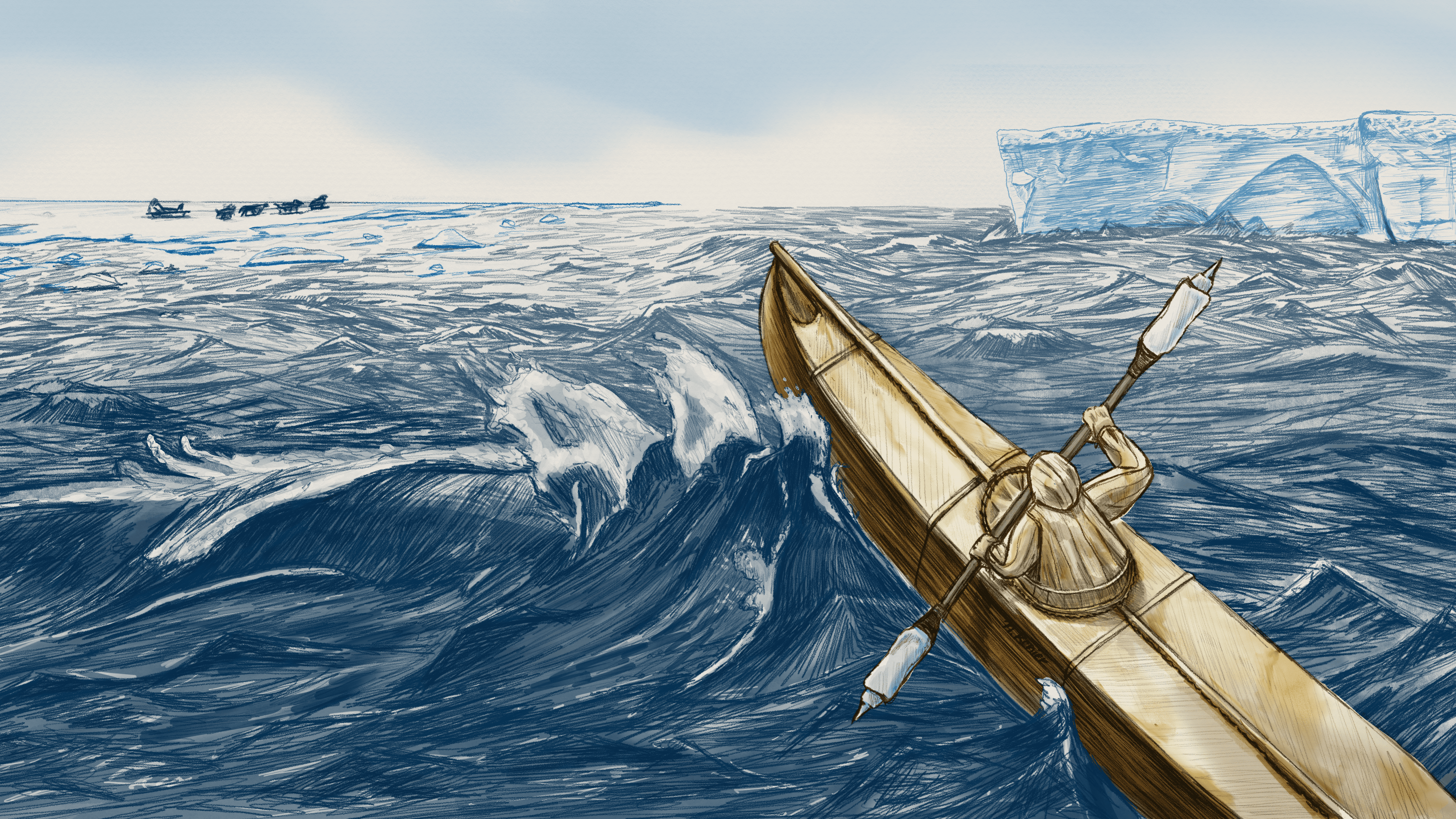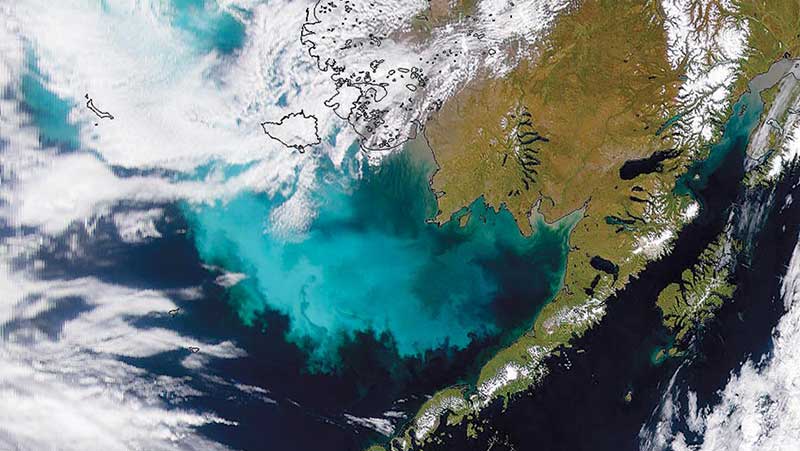Shifting Continents and Climates
Sixty-five millions years ago, dinosaurs had just become extinct, and mammals were starting to dominate the planet.
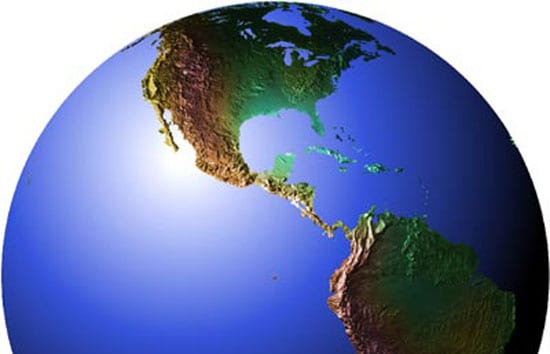
Estimated reading time: 2 minutes
Sixty-five millions years ago, dinosaurs had just become extinct, and mammals were starting to dominate the planet. Tropical conditions extended to northern Spain and the heartland of North America. Large trees grew in Greenland and Antarctica, and alligators and primates could be found on Ellesmere Island in Arctic Canada. Global temperatures were 6° to 10°C (11° to 18°F) warmer than today, and the polar regions were free of ice.
Since then, Earth’s history has been marked by a sustained and nearly continuous cooling trend, punctuated by abrupt shifts and transitions. Today, Homo sapiens now dominate the landscape, the poles are blanketed in ice, and over the past 3 million years, massive continental glaciers have waxed and waned in an ongoing era of ice ages. Our modern climate is a brief, temperate respite from an otherwise cold cycle in Earth’s geologic life.
So how did our hothouse planet turn into an icehouse planet?
Tectonic causes, climatic effects
One explanation for the change is the steadily and substantially decreasing levels of carbon dioxide and other greenhouse gases in the atmosphere (at least until the anomalous and very recent post-Industrial Revolution era). Less greenhouse gas means that less heat is trapped in Earth’s atmosphere.
But changes in Earth’s atmosphere cannot explain the full extent of global cooling or periods of acute change. Nor can scientists fully explain the causes of the atmospheric changes themselves.
So what other forces or processes might have rearranged Earth’s climate so dramatically?
In recent years, scientists have been building a persuasive, but still controversial case that changes in the solid earth (the crust and mantle) spurred changes in the liquid earth (the oceans and atmosphere). In other words, so-called tectonic forces—the drifting and collisions of Earth’s tectonic plates—may lead to climate changes.
Rising mountains, closing gateways
The following articles outline two theories that link tectonic and climatic changes. One theory, outlined by Gerald Haug of the Eidgenossiche Technische Hochschule (ETH) in Zürich, Switzerland, and colleagues, proposes that the opening and closing of oceanic gateways between land masses—a result of continental drift—may have altered global ocean circulation patterns, which, in turn, led to climate changes. According to another theory, outlined by Peter Clift of Woods Hole Oceanographic Institution, the uplift of great mountain belts—caused by continental collisions—may have disrupted atmospheric circulation and triggered a cascade of other climate changes.
“Understanding the links between solid and liquid Earth systems is a first-order scientific problem for the 21st century,” says Clift, a marine geologist.
The best evidence to reveal those links, he notes, is buried under the seafloor.
